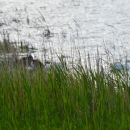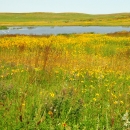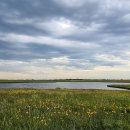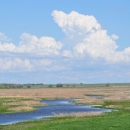About Us
Located in South Dakota, these lands and waters are vitally important to the nation’s migratory bird populations – aquatic birds and songbirds nest here in great numbers. Lake Andes is a natural, shallow prairie lake whose water supply depends entirely on natural runoff. Lake levels periodically rise and fall, with the entire lake going dry about once every twenty years.
Two dikes separate Lake Andes into three separate units, but the lack of a permanent water supply allows very little manipulation of water levels to encourage growth of aquatic foods or assure duck broods of adequate water in drier years. Only the Owen's Bay marsh, fed primarily by the waters from a free-flowing well, permits effective manipulation of water levels to maximize the bay's benefit to wildlife.
Our Mission
Each unit of the National Wildlife Refuge System is established to serve a statutory purpose that targets the conservation of native species dependent on its lands and waters. All activities on those acres are reviewed for compatibility with this statutory purpose.
Our History
This was a lake the Sioux Indians knew well, for they frequently made camp here during their pursuit of migrating herds of buffalo and flocks of waterfowl. Around the turn of the century, as settlements were becoming firmly established, the lake became well-known as a fine place to fish. Several resorts were built near the lake to accommodate visitors who arrived by train.
The Refuge was established in 1936 with the purchase of 365 acres of land in the Owen's Bay area. Subsequent purchases of land have been made on a continuing basis.
The meandered lake bed is protected by a 1939 easement from the State of South Dakota. The easement authorizes the U.S. Fish and Wildlife Service to flood the lake bed and maintain a closed refuge for migratory birds and other wildlife. However, the center portion of the lake bed is open to hunting.






